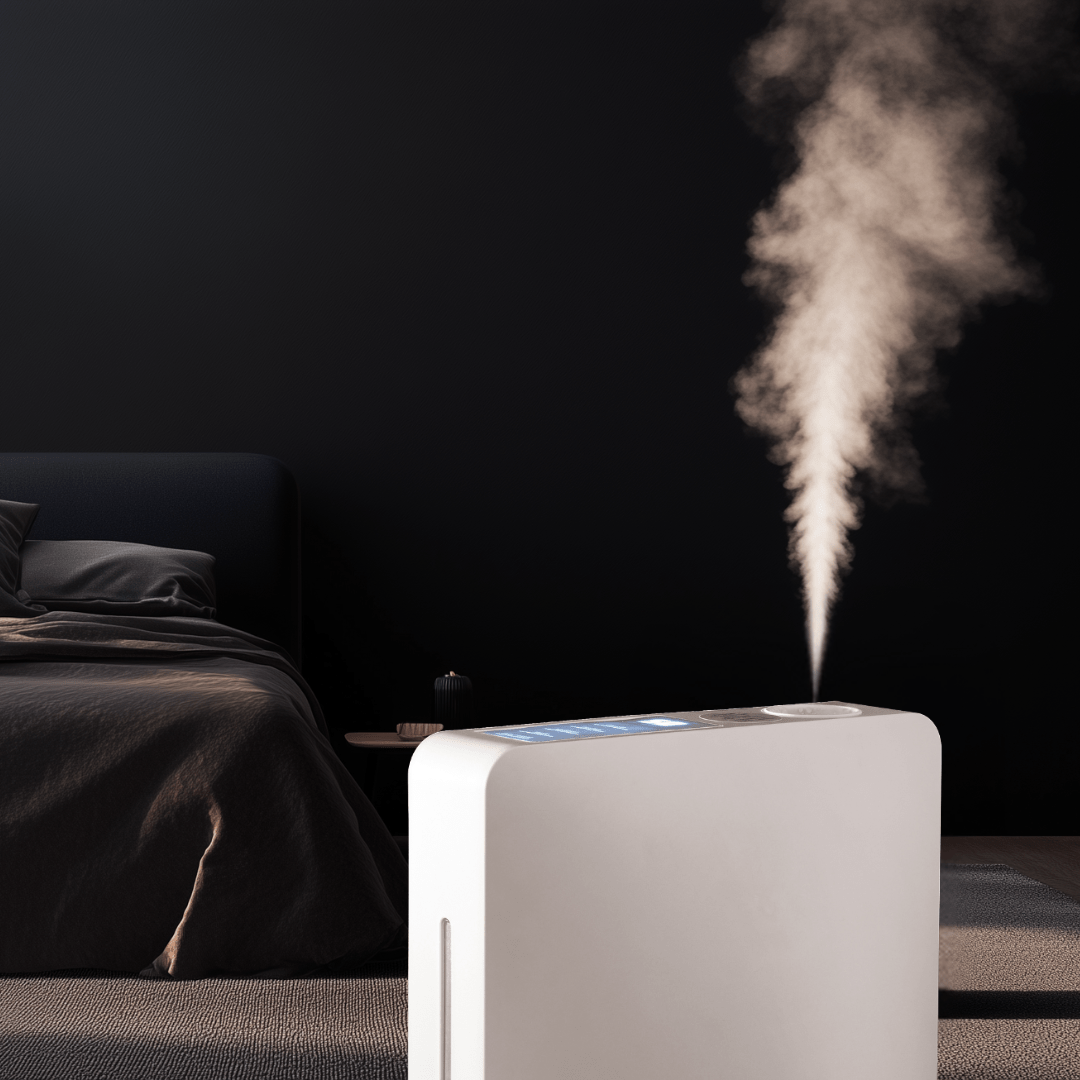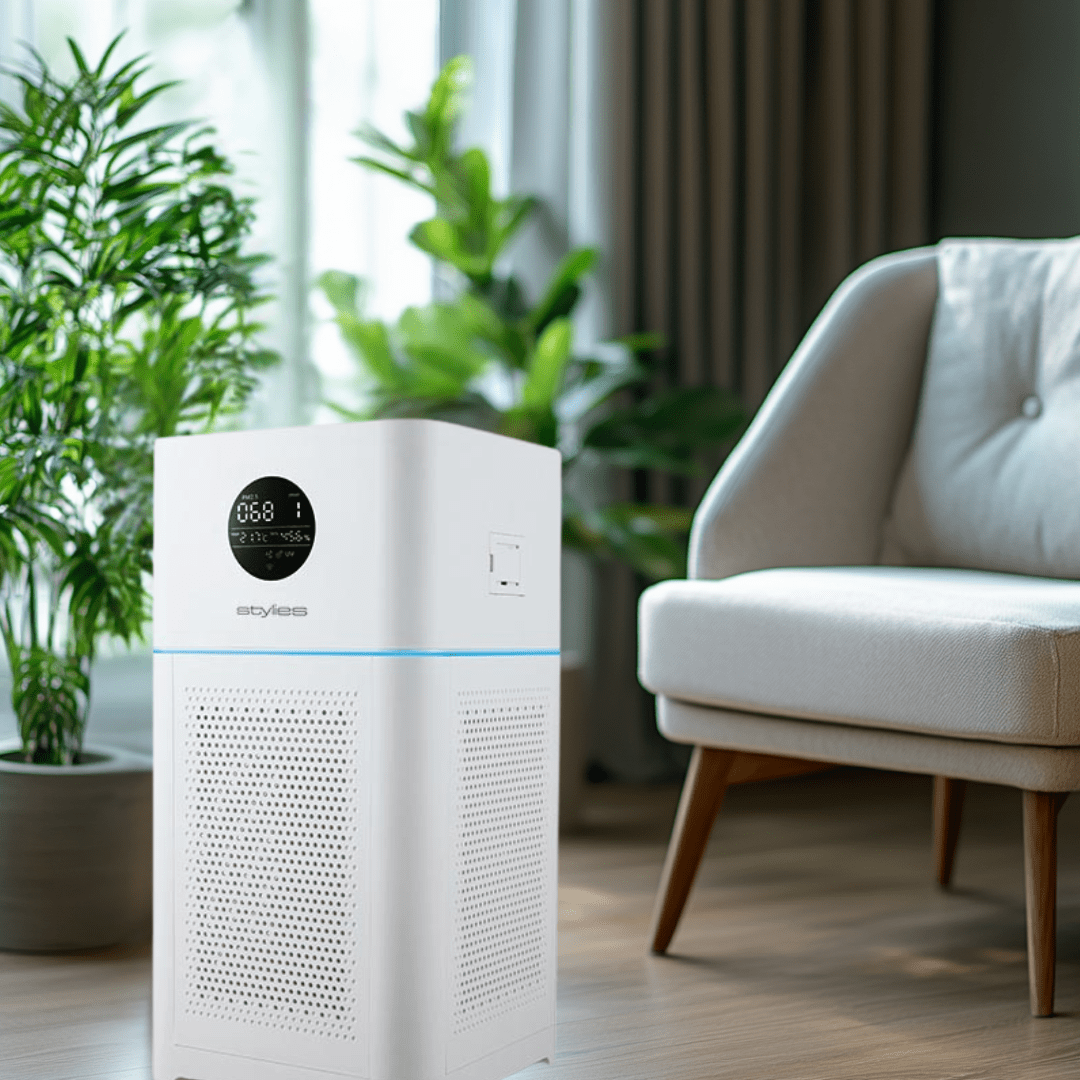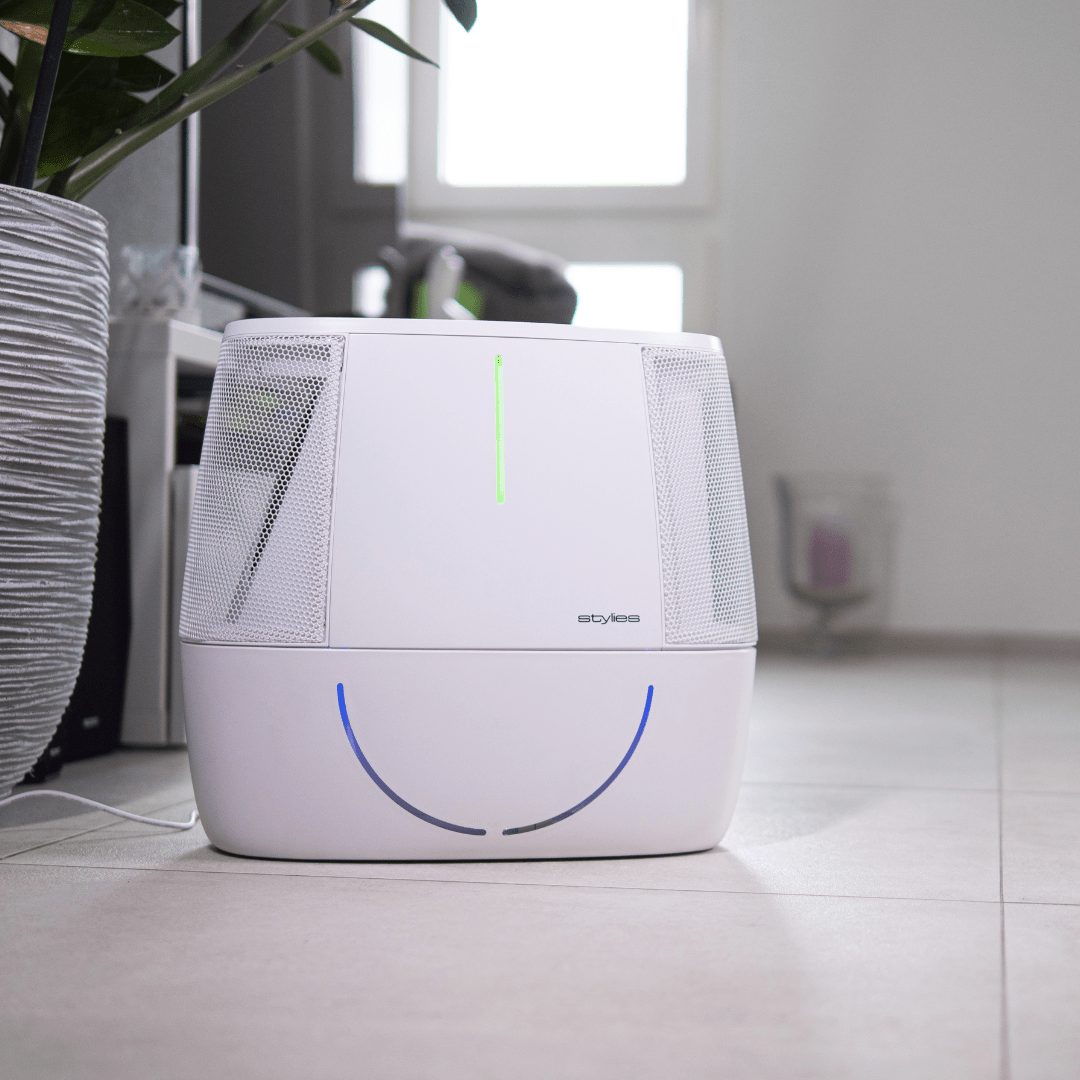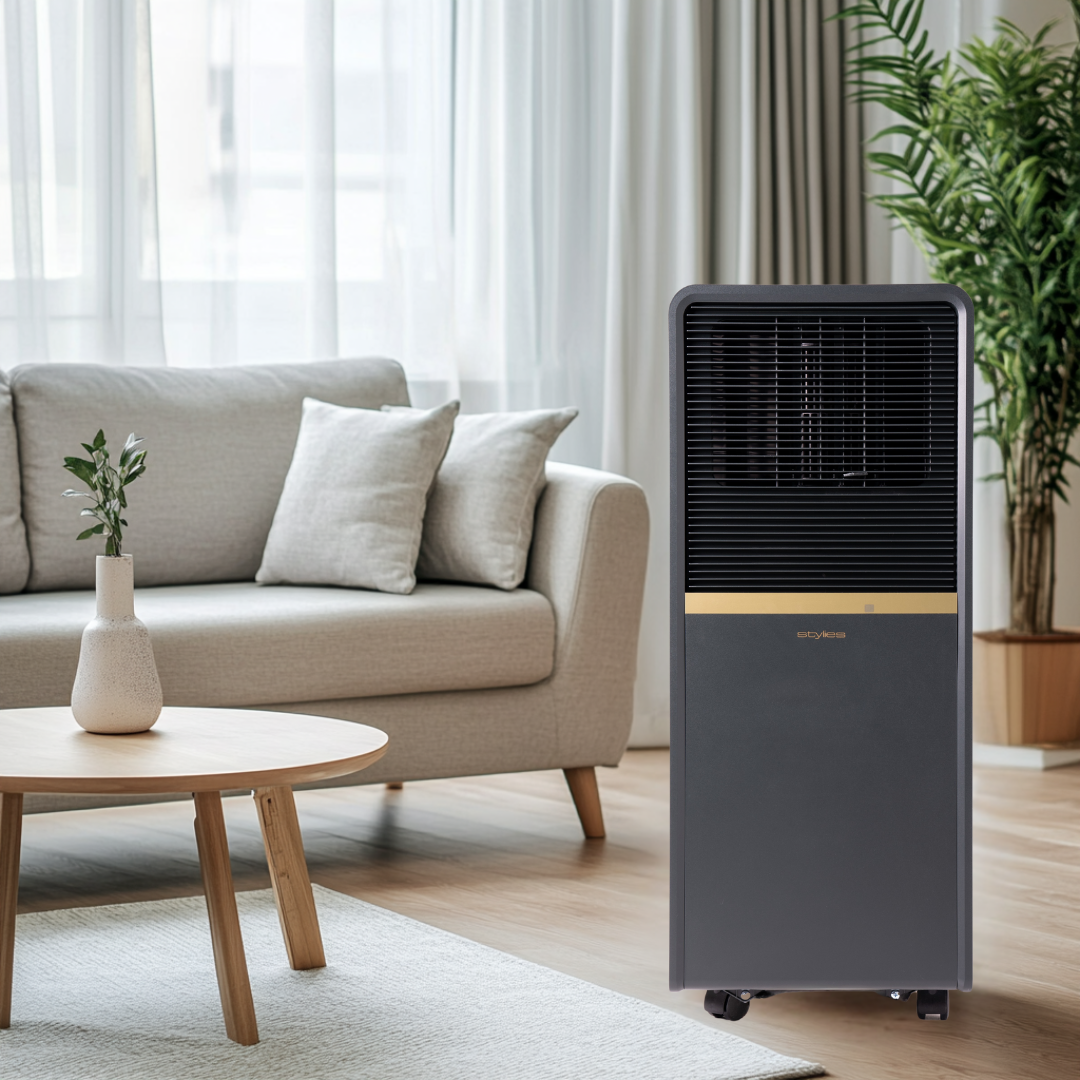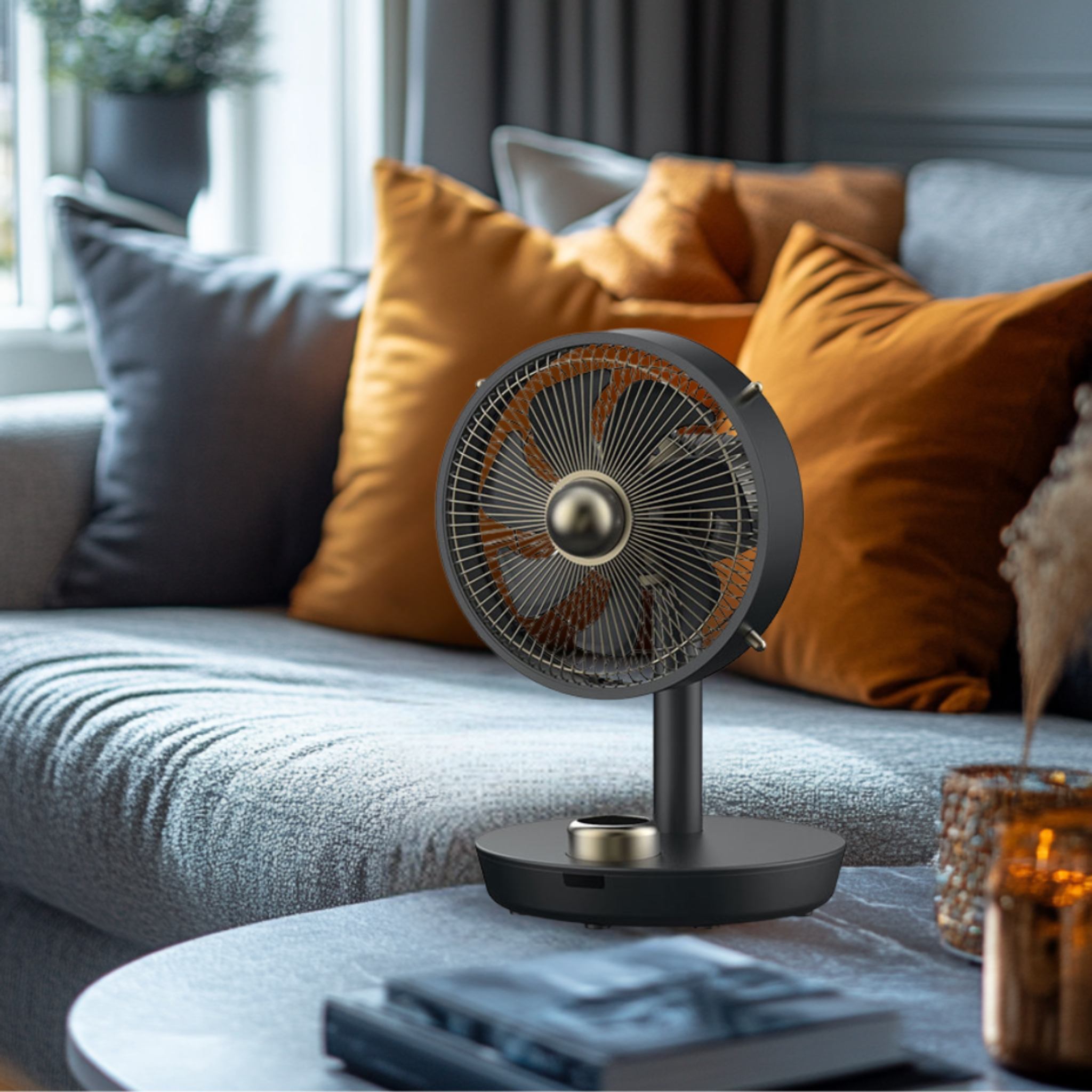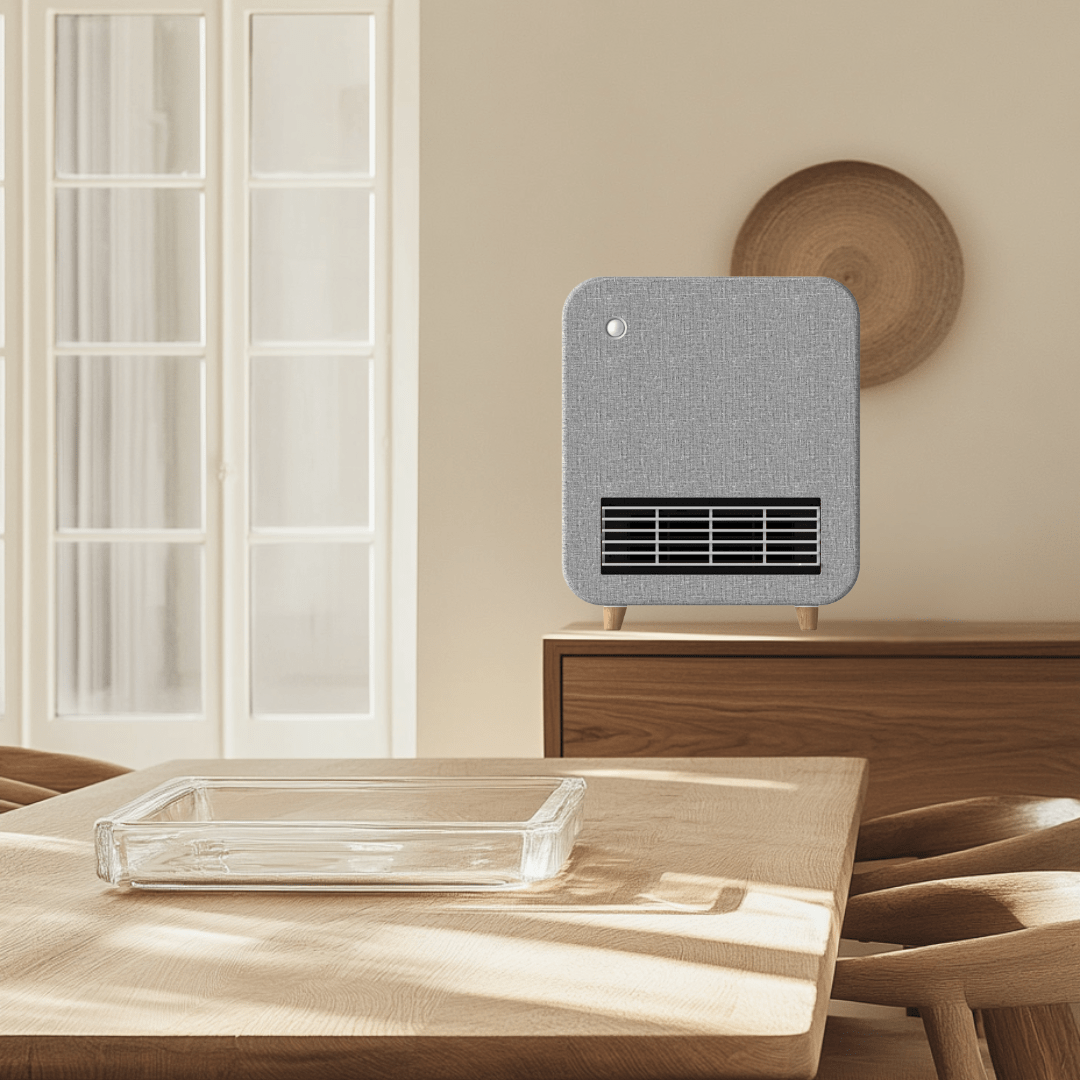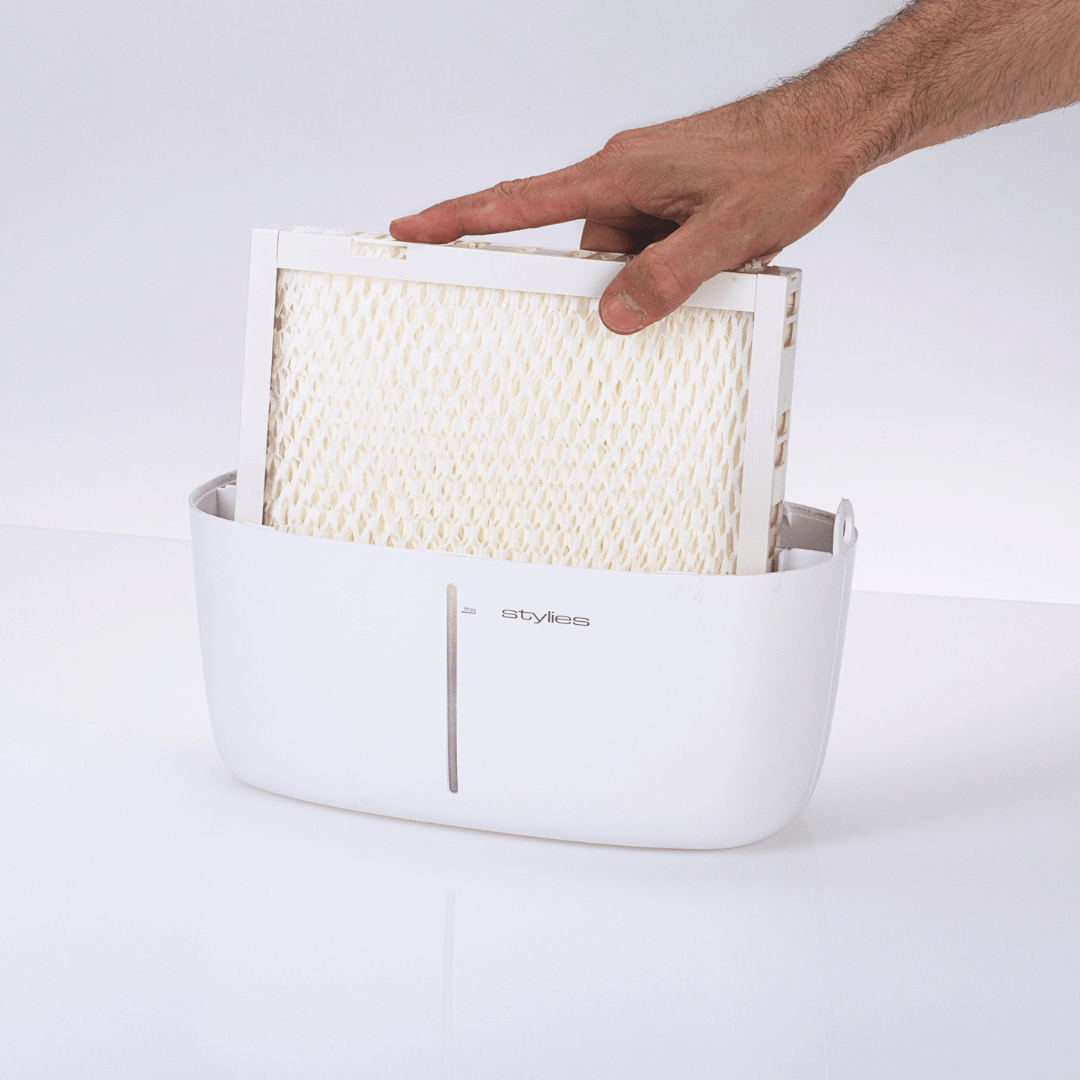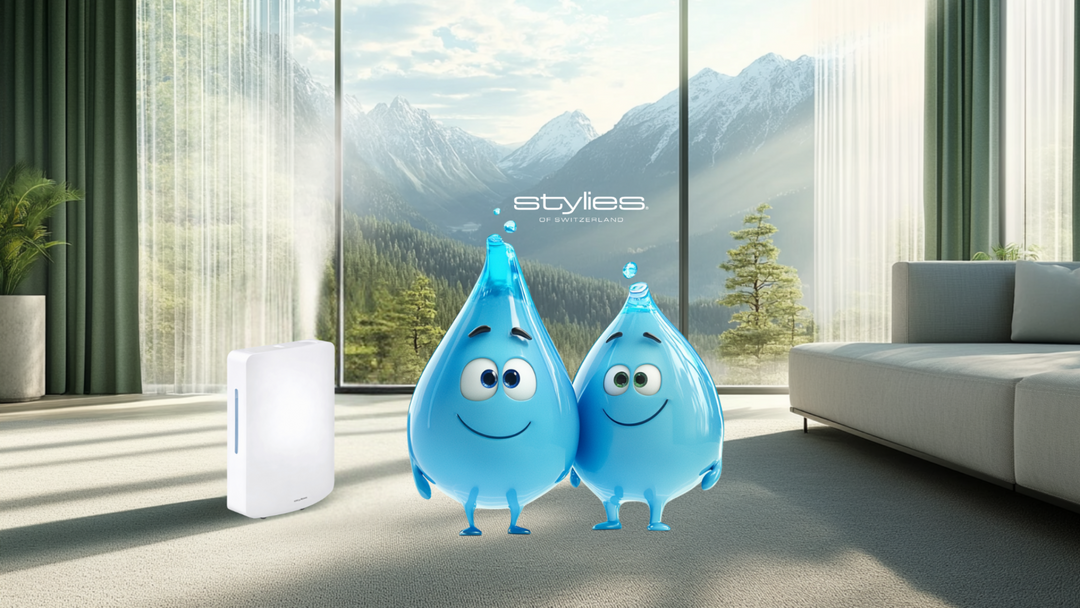Remove bad odors - neutralize & clean
Introduction - Scientific findings:
Indoor air quality as a health factor
Indoor air quality has a measurable impact on physical health and mental performance . For example, the U.S. Environmental Protection Agency (EPA) classifies indoor air pollution as one of the five greatest health risks. Numerous studies show that poor indoor air quality—such as high CO₂ levels or particulate matter pollution — leads to discomfort, difficulty concentrating, and even an increased risk of disease. In a Harvard study with office workers, an increase in particulate matter concentration of just 10 µg/m³ led to around 1% reduced cognitive performance , and an increase in CO₂ levels of 500 ppm showed similar effects. . Stuffy, polluted air can therefore promote fatigue, headaches and reduced productivity Conversely, fresh, clean air and optimal humidity contribute to greater well-being: people feel more alert, more focused, and less stressed.
It's important to minimize sources of indoor pollutants as much as possible—for example, by avoiding tobacco smoke and chemicals—and to ventilate regularly to exchange stale air with oxygen-rich outside air. Regular ventilation is especially essential in modern, airtight buildings or during the heating season, as air purifiers alone cannot replace ventilation. Overall, scientific studies clearly demonstrate that a healthy indoor climate (free from pollutants, with sufficient oxygen and the right humidity) is a basic prerequisite for physical well-being, restful sleep, and high performance in everyday life.
Air quality at home: More than just fresh air!
Good air quality at home is crucial – it not only affects your mood, but also your health and well-being. Poor air quality or unpleasant, bothersome odors can cause discomfort, headaches, and fatigue .
Typical causes of bad smells in living spaces:
-
Cooking, smoke, pets
-
Moisture and mold
-
Textiles and furniture that bind odors
Once the cause has been identified, it's time to eliminate the unpleasant odor. You'll find some tips and advice on home remedies that work wonders and effectively eliminate bad odors in your home.
How to permanently eliminate unpleasant odors:
1. Ventilation – The classic
-
Daily ventilation (5–10 minutes) creates the greatest effect.
-
Cross ventilation (draft) removes odors most effectively.
2. Air purifiers – modern technology in use
-
HEPA filters effectively remove dust particles, pollen and odor molecules.
-
Activated carbon filters specifically target stubborn odors, perfect for kitchens or living rooms.
3. Natural helpers – environmentally friendly and stylish
-
Houseplants filter pollutants and maintain a pleasant level of humidity. Peace lilies (Spathiphyllum) , snake plants (Sansevieria), and spider plants are particularly effective.
-
Simple household remedies : Baking soda, baking powder, vinegar or coffee effectively neutralize odors when left open in bowls.
- Insider tip: Cat litter: It may sound surprising, but cat litter is a simple and inexpensive way to banish unpleasant odors and moisture from indoor spaces. Especially in humid weather or in enclosed, poorly ventilated spaces, cat litter can act as an "odor magnet."
Here are some of my TIPS & TRICKS
Insider tip: Cat litter for odor removal
How it works:
-
Preferably use clumping cat litter with activated charcoal, as it neutralizes odors most effectively.
-
Fill a small bowl or cloth bag with the litter and place it in the affected areas, such as the shoe cupboard, basement or pantry.
-
The litter absorbs excess moisture and at the same time binds bad odors permanently.
Tip for pet owners and allergy sufferers:
-
Cat litter is a harmless, chemical-free aid. However, for allergy sufferers or sensitive individuals, a version without fragrances and added chemicals is recommended.
-
Change the cat litter regularly (approximately every 2-4 weeks) for best results.
- Does not work if the cat litter is used as a litter box.
Extra advantage sustainability:
-
Choose sustainable alternatives like recycled paper or natural clay . This not only helps your indoor climate but also the environment.
Baking powder: The all-rounder against odors
Baking powder (or baking soda) chemically neutralizes odors by absorbing and binding odor molecules. It's particularly effective against musty odors, damp, and everyday odors (e.g., those found in refrigerators, shoes, or carpets).
Practical applications:
-
Room freshening: Sprinkle baking soda on carpets, sofas, or upholstered furniture, let it work for about 15–30 minutes, and then vacuum thoroughly.
-
Refrigerator deodorizer: Place an open bowl of baking soda in the refrigerator. The odors will be neutralized.
-
Shoe freshness: Sprinkle the inside of your shoes with a little baking soda and let it work overnight. Then simply shake it out.
Vinegar: A powerful helper against stubborn odors
Vinegar (especially white vinegar or apple cider vinegar) neutralizes unpleasant odors by changing their molecular structures. The vinegar smell itself dissipates quickly, taking the unwanted odors with it.
Practical applications:
-
Eliminate cooking odors: Boil a cup of vinegar and water briefly. The vinegar vapor binds and neutralizes cooking odors.
-
Freshen up closets or rooms: Place an open bowl of vinegar in musty rooms, bathrooms, or basements overnight. The vinegar effectively absorbs odors.
-
Deodorize textiles: Washing machines or laundry that smells musty benefit from adding vinegar during the wash cycle.
Combination trick (vinegar + baking soda):
If you combine vinegar with baking soda, a chemical reaction occurs (it foams and fizzes) that is particularly effective at removing stubborn dirt and odors:
-
Ideal for drains or stains on fabrics where odors have become trapped.
-
Caution : Never combine in closed containers as gas pressure will build up!
Vacuuming:
A vacuum cleaner is an often underestimated tool for eliminating odors in living spaces. To ensure your vacuum cleaner contributes optimally to good air quality at home, you should keep a few things in mind:
1. Correct filter selection (HEPA filter)
-
If possible, choose a HEPA (High Efficiency Particulate Air) filter .
-
HEPA filters capture up to 99.97% of dirt particles, dust, mite droppings, allergens, and pollen that would otherwise be blown out.
-
Ideal especially for allergy sufferers, asthmatics and families with small children.
2. Regular filter changes or cleaning
-
A dirty filter significantly reduces performance and spreads bad odors and bacteria back into the room.
-
Change or clean every 3 to 6 months depending on the model.
-
Check the filters regularly and clean or replace them according to the manufacturer's instructions.
3. Vacuum cleaner bags:
-
Change bags in good time: Full bags produce unpleasant odors.
-
If necessary, use special odor-stopping bags that also contain activated carbon.
-
Alternatively, you can add some baking soda or a few drops of a pleasant essential oil directly into the bag.
4. Additives for a pleasant fragrance
-
Add a few drops of essential oil (e.g., lavender, lemon, or peppermint) to a cotton pad and place it directly into the bag or container. This will spread a pleasant scent throughout the room as you vacuum.
-
Ready-made fragrance sticks or beads are available on the market that have been specially developed for use in vacuum cleaners.
5. Regular cleaning of the device
-
Regularly clean not only the filter, but also the brushes, hoses and suction pipes, as odors and dirt can settle here.
-
Simply clean occasionally with warm water and mild cleaner and allow to dry thoroughly.
6. Models with integrated air purifier
-
High-quality vacuum cleaners sometimes have integrated air purification systems that simultaneously clean the air and reduce odors while vacuuming.
-
A worthwhile purchase, especially for sensitive people.
Why is cigarette smell so persistent?
Cigarette smoke contains tar, nicotine, and numerous chemical compounds that penetrate deep into surfaces and linger for a long time. As a result, a room smells strongly of nicotine long after smoking.
Effective methods to combat cigarette smoke:
1. Intensive ventilation
-
Ventilate and cross-ventilate after each smoking session.
-
Open windows completely for at least 10-15 minutes to let in fresh air.
2. Use an activated carbon air purifier
-
Special activated carbon filters effectively neutralize unpleasant odors from cigarette smoke by binding chemical components.
-
Recommended models: Dyson Pure Cool or Philips Series 2000i with activated carbon filter.
3. Odor removal with vinegar or coffee
-
Place a bowl of white vinegar or coffee grounds in the affected room to mask the bad smell.
-
Vinegar or coffee reliably bind the smell of smoke, with coffee also leaving a pleasant aroma.
4. Targeted surface cleaning against cigarette smoke
- Textiles : Washable textiles (curtains, pillows, blankets) should be washed or cleaned regularly. Adding vinegar helps effectively remove odors.
- Upholstery and carpets : Sprinkle with baking soda, leave to work for at least 30 minutes, then vacuum thoroughly.
- Walls and ceilings : Wash or repaint regularly, especially if nicotine stains are visible.
- Furniture and hard surfaces : Clean with water and vinegar, then dry thoroughly.
5. Long-term strategy
-
Ideally, smoking should be done on the balcony or terrace.
-
If smoking indoors is unavoidable, keep specific rooms smoke-free and regularly ventilate and clean smoking areas.
How do I keep my trash can free of bad odors?
1. Regular cleaning
Why important?
-
Food residues and liquids settle and produce unpleasant food odors.
Here's how:
-
Clean the trash can thoroughly at least every 1-2 weeks .
-
Use warm water with a little dish soap and a splash of vinegar – vinegar disinfects and neutralizes odors.
-
Allow to dry thoroughly after cleaning.
2. Odor absorbers directly in the trash can
Helpful additions:
-
Baking soda or baking powder: Sprinkle a small layer at the bottom of the trash can – effectively neutralizes odors.
-
Coffee powder: Absorbs odors reliably and spreads a pleasantly fragrant aroma.
-
Activated carbon filter : Place small activated carbon bags or pads in the bottom of the bucket.
3. Garbage bags with fragrance or anti-odor
Recommendation:
-
Special garbage bags with integrated odor absorber (activated carbon or fragrance).
-
Alternatively, add a few drops of essential oil (e.g. lemon, peppermint, lavender) to the bottom of the garbage bag before placing it in the trash.
4. Dispose of waste regularly and quickly
-
Do not leave organic and residual waste standing for too long (beware of gases)
-
If possible, dispose of garbage daily or every 1-2 days, especially in warm temperatures.
5. Ventilate trash cans openly
-
Leave the emptied trash can open for regular ventilation.
-
Direct sunlight helps reduce odors and inhibits germs.
6. Aromatic home remedies
-
Lemon peels : Put them in the trash after use – the peels spread a fresh scent and neutralize odors.
-
Tea tree oil : Apply a few drops to a kitchen towel and place it at the bottom of the trash can – it has an antibacterial effect and neutralizes odors.
Practical checklist for good waste hygiene:
-
✅ Regular cleaning (weekly)
-
✅ Use odor absorbers (baking soda, coffee)
-
✅ Dispose of organic and kitchen waste quickly
-
✅ Garbage bags with fragrance or anti-odor technology
-
✅ Regular ventilation of the container
-
✅ Use aromatic home remedies regularly
Aromatherapy: Targeted mood control
Aromatherapy uses natural essential oils to positively influence your mind and well-being through the nose and skin. Not only does your air smell good, it also supports you emotionally.
Popular oils and their effects:
-
Lavender : calming, helps with sleep and against stress.
-
Lemon & Bergamot : activating, promotes concentration, lifts the mood.
-
Eucalyptus & Mint : invigorating
-
Vanilla & Cinnamon : create coziness and security
Aromatherapy: Influence of scents on body and psyche
In addition to objective air quality, the room's scent and aroma content also play a role in our well-being. Aromatherapy , the use of essential oils and fragrances, has been used for centuries to positively influence the body and mind. In recent years, more and more studies have confirmed the effective effects of natural scents on mental and physical well-being. Numerous studies have shown, for example, the following effects:
-
Stress reduction and relaxation: Several plant scents have a calming effect . Lavender oil, in particular, is known for its stress-reducing and anxiety-relieving effects. In a nursing home model project, it was observed that by scenting with lavender oil, restless residents became significantly calmer and the stress level of nursing staff also decreased noticeably . Similarly, a study by the Charité Berlin showed that aromatherapy alleviated symptoms such as sleep disturbances, fatigue and anxiety in cancer patients and increased subjective well-being. .
-
Mood lift and energy: Citrus scents (e.g. orange, lemon, bergamot) have been proven to have a positive effect on mood and even physiologically lower cortisol levels (stress hormone) In the aforementioned projects, caregivers reported that apathetic, listless residents became more energized by stimulating scents. Fresh citrus or peppermint scents in the morning can boost energy and drive, which increases motivation, especially in the work environment.
-
Better sleep and calming: Studies have shown that lavender promotes sleep—when inhaled, it can alleviate insomnia. Ylang-ylang and rose oil are also traditionally used for calming purposes; in one study, ylang-ylang inhalation improved calmness and lowered blood pressure, which promotes relaxation and sleep.
-
Pain relief and physical well-being: Initial studies indicate that certain scents can even influence physical symptoms. For example, the Charité study observed that patients' nausea and pain could be alleviated by individually selected essential oils. This demonstrates the potential for using scents as an adjunct measure to relieve, for example, headaches (peppermint oil for tension headaches) or cold symptoms (eucalyptus for nasal congestion).
Overall, aromatherapy affects emotions primarily through the sense of smell and the limbic system in the brain. Pleasant scents can trigger relaxation responses in the body, reduce stress hormones, and elevate mood. However, it should be emphasized that essential oils are not miracle cures : Their effects vary from person to person and in many cases should be seen as complementary (e.g., in addition to medical therapy). It is important to use them with care – highly concentrated plant essences should be correctly dosed and of high quality to avoid unwanted side effects. Overall, however, many examples from research and practice demonstrate that good indoor air combined with appropriate fragrances can noticeably improve both physical and psychological well-being.
How aroma diffusers work and selection criteria
How do aroma diffusers work?
Aroma diffusers are devices that evenly distribute fragrances (essential oils) throughout the air. There are different operating principles :
-
Ultrasonic diffuser (with water): This is the most common type. An ultrasonic diffuser contains a water tank to which a few drops of essential oil are added. Ultrasonic vibrations transform the water-oil mixture into a fine, cool mist and release it into the air. The escaping mist contains a small amount of oil and water droplets. Effect: The room is scented with the fragrance, while the air is slightly humidified – practical in dry environments. .
-
Cold nebulizers (waterless nebulizers): These devices (also called atomizers ) work without water . They atomize pure essential oil into microscopically small droplets using compressed air or a pump. This creates a concentrated aerosol mist of pure oil that is released directly into the air. Effect: Very intense fragrance due to the high oil concentration. Ideal for quickly filling large rooms with fragrance or achieving a strong aromatherapeutic effect. However, no moisture is released.
-
Heat diffuser (fragrance lamp): Here, the oil (often diluted with a little water) is evaporated by heating – traditionally in a fragrance lamp with a tealight or electric. The heat evaporates the oil and disperses the fragrance. Effect: Simple method for fragrance, however, heat can alter the composition of the oils and destroy some fragrance nuances. . In addition, the fragrance remains rather localized , since no active nebulization takes place .
- Diffuser with special aroma channel: The Stylies Elara Aroma Diffuser provides a gentle, even distribution of fragrance notes essential oils, without water or ultrasound. Ideal for anyone seeking a calm, energy-saving, and uncomplicated fragrance solution.
There are also passive diffusion methods (fragrance stones, rattan sticks in fragrance oil) that work without electricity, but only release very gentle fragrance within a small area. Modern electric diffusers are usually either ultrasonic or cold air diffusers, sometimes a combination.
Choosing the right diffuser
When choosing an aroma diffuser, several criteria play a role:
-
Room size: For small rooms (bedrooms, bathrooms), a compact ultrasonic diffuser with a small tank is usually sufficient. Larger rooms or open-plan living areas can be scented more effectively with more powerful devices, such as a cold mist diffuser, which distributes pure oil and thus covers a larger area. . Manufacturers often specify the recommended room size (in m²).
-
Fragrance intensity: If the fragrance should be more subtle in the background (e.g. for relaxation), an ultrasonic diffuser is suitable, as it atomizes the oil in a diluted form For intensive aromatherapy (e.g. for colds or for therapeutic use), a nebulizer is better, as it releases the full oil aromas unadulterated .
-
Handling and maintenance: Ultrasonic diffusers must be filled with water regularly and emptied and cleaned after use. They have the advantage of quiet operation (only a gentle bubbling sound) and are relatively easy to maintain – usually, rinsing and occasional descaling are sufficient. Nebulizers do not require water filling and therefore require less daily work, but they should also be cleaned periodically, as oil residues can otherwise become resinous. . In addition, nebulizers often have interval programs (e.g. 10 minutes on, then pause) to avoid overloading the air with fragrance. .
-
Runtime and tank size: A larger water tank means longer runtimes. Small diffusers (100 ml) run for approximately 3–4 hours, while larger ones (300+ ml) sometimes run for 8–10 hours at a time. Some models have interval or night modes that alternate on/off for 30 seconds, for example, to provide subtle fragrance overnight. Those who want extended operation (e.g., in the office during the day) should look for appropriate modes.
-
Noise level & lighting: Almost all diffusers are relatively quiet. Ultrasonic devices have a barely audible hum; nebulizers can be a bit louder due to the pump. – it's worth checking out reviews here. Many diffusers offer integrated LED mood lights or even flame effects (e.g., the Luna model from Stylies creates mood lighting). Consider whether you want lighting (great as a night light) or whether you prefer to turn it off (many devices allow you to turn the light off, which is important in the bedroom).
-
Power supply & mobility: Most devices are powered by a power plug. There are also wireless diffusers with rechargeable batteries/battery that can be placed anywhere (e.g., portable USB diffusers for cars or travel). However, these have a limited battery life. Mains-powered devices are more common for permanent use at home.
-
Design and materials: Since a diffuser is usually visible in the room, appearance and material play a role. Designs range from simple white plastic devices to sophisticated models made of glass, ceramic, or wood. The latter often blend more harmoniously into the living environment, but are more expensive and fragile.
In summary, you should choose a diffuser that suits the room size and intended use , is easy to use , and meets your preferences (volume, light, design). In the next section, we'll compare the main diffuser types and provide an overview of their advantages and disadvantages.
Suitable essential oils for different purposes
Just as important as the diffuser itself is choosing the right fragrance . Essential oils each have different effects, so you should choose the right oil based on the desired effect. The following table provides an overview of some popular oils and fragrance blends for various purposes:
| Goal/Purpose | Suitable essential oils & effects |
|---|---|
| Relaxation & stress relief |
Lavender oil: A classic for relaxation, has a calming and anxiety-relieving effect . Roman Chamomile: Gentle, relaxing scent, helps to calm down. Ylang-Ylang: Sweet floral scent, promotes calm and serene well-being . |
| Energy & Mood |
Citrus oils (orange, lemon, grapefruit): Invigorating and mood-enhancing, can banish morning sluggishness . Rosemary: Fresh herbaceous scent, considered stimulating and concentration-enhancing (traditionally known as “memory oil”). Peppermint: A cool, menthol-infused scent, it's refreshing and can provide a boost during periods of low energy. Caution: Very intense—use sparingly. |
| Concentration & Clarity |
Lemon/Bergamot: Bright, fresh scents that lift the mood and clear the mind – good for home office or study periods . Cedar or cypress: Woody, earthy scents that support a concentrated atmosphere without being distracting. Eucalyptus: Sharp, "clear" scent perceived as mentally stimulating—often combined with lemon scents. (Use cautiously for sensitive individuals; see allergy advice.) |
| Sleep & Rest |
Lavender: The No. 1 for better sleep; promotes relaxation before bedtime . Valerian (in blend): Earthy herbal scent, traditionally sleep-inducing (often combined with lavender in sleep blends). Sandalwood: A warm, woody scent that has a calming effect and creates a cozy, peaceful atmosphere in the evening. Many sleep fragrance blends rely on combinations of floral scents (lavender, neroli) and woods. |
| Indoor climate & freshness |
Eucalyptus & Peppermint: Create a feeling of fresh, “clean” air – popular for colds, as they subjectively make breathing easier (menthol-like coolness). Tea tree oil: Herbal medicinal fragrance, known for antibacterial properties – can help neutralize musty odors (use sparingly, dominant odor). Lemongrass: A fresh, lemony scent with a slightly herbal note that makes rooms smell "clean"; ideal for eliminating odors (cooking, pets). |
Note: Always use pure, natural essential oils , not synthetic perfume oils. Genuine plant oils not only smell better but also have beneficial effects, while artificial fragrances only add odor without any benefit. Furthermore, oils should be used carefully and in the correct dosage (approximately 3–8 drops in a diffuser is typical, depending on the room size). Not all oils are suitable for children, pregnant women, or sensitive individuals.
Diffuser types in comparison: Ultrasonic, nebulizer, heat
The different types of diffusers each have their advantages and disadvantages. The following table compares the most common diffuser types :
| Diffuser type | How it works | Advantages | Disadvantages |
|---|---|---|---|
| Ultrasonic diffuser (with water) | Ultrasonic membrane atomizes water-oil mix into a fine, cool mist. | + Humidifies the air at the same time (good for dry heating air) . + Easy to use, many affordable models available . + Very quiet in operation, suitable for the bedroom. |
– Fragrance intensity is lower (oil is diluted). – Must be refilled regularly (tank lasts only a few hours depending on size) . – Leaves a fine mist of water in the surrounding area (surfaces may become slightly damp. |
| Cold air nebulizer (waterless) | Pumps pure essential oil (without water) into the air as a fine aerosol mist . | + Very intensive fragrance, concentrated fragrance without dilution – ideal for large rooms and therapeutic purposes . + Preserves the complete oil active ingredients as no heating or water dilution takes place . + No water tank required: less daily maintenance. |
– No humidification (possibly a disadvantage for very dry rooms) . – Tends to be more expensive to purchase . – Louder than ultrasound (quiet hum of the pump) . – Higher oil consumption: Oil reserves are used up faster, running costs are higher . |
| Heat diffuser (fragrance lamp) | Evaporates oil using heat (tealight flame or heating module) in a bowl of water. | + Very simple technology , no electronics – hardly susceptible to interference. + Cheapest option (fragrance lamps available from just a few euros). + Pleasant candlelight ambience (when using tealights). |
– Open flames (from candles) pose a fire hazard – do not leave unattended . – Heat changes the chemical composition of the oil, changes the fragrance and some therapeutic ingredients are lost . – Very limited range: only noticeable in the immediate vicinity . – Constant refilling necessary (water evaporates quickly). |
In summary: For most applications in the home and office, an ultrasonic diffuser is a good all-rounder – it combines fragrance with light humidification, is quiet, and affordable. Those who want to use strong aromatherapy or scent a very large room should choose a cold diffuser , which delivers pure fragrance power. The classic aroma lamp is more suitable for occasional, atmospheric fragrance in a small space (e.g., in the bathroom) or for users who consciously want to avoid electronics. It is often a good solution to use an ultrasonic diffuser for everyday use and to have a nebulizer for short, intensive applications when needed (e.g., when suffering from a cold).
Application tips for different target groups
Aromatherapy and air quality improvement can generally be used in many situations – however, specific guidelines should be followed depending on the target group . Here are some recommendations for families with children , singles , and those with allergies and sensitive respiratory systems :
Families with children
For households with babies and children, special care should be taken when selecting oils . Not all essential oils are child-friendly: In particular, oils with strong menthol or camphor content, such as peppermint, eucalyptus, camphor, or tea tree, should be strictly avoided for children under 6 years of age. These contain ingredients (e.g., 1,8-cineole, menthol) that can cause breathing problems in young children. Instead, mild fragrances are recommended: lavender or chamomile are suitable for calming purposes; for colds, you can carefully use a very low dose of a child-friendly thyme-myrtle balm (ready-made children's mixtures are available).
Reduce dosage: Children are more sensitive to scents. Therefore, always use smaller doses – about 1-2 drops in a diffuser in the child's room is sufficient. Also, use the scent only for a limited time (e.g., 30 minutes before bedtime, not all night long).
Safety first: Keep open flames (scented candles, tea lights) away from children. An ultrasonic diffuser with an automatic shut-off (turns off when the water runs out) is ideal. Place the device safely out of reach to prevent it from being knocked over.
Don't forget to ventilate the room: Regular fresh air is especially important in a baby's room. A diffuser should n't be left running for hours in a permanently unventilated room ; it's better to ventilate occasionally to maintain sufficient oxygen in the room.
Example application: In the evening before bedtime, a diffuser with 1–2 drops of lavender oil can be used in the child's room for approximately 20 minutes to create a calming atmosphere. Then turn it off (or use a timer). This way, both parent and child benefit from the relaxing effect without overstimulation.
Singles and people living alone
Singles can use aromatherapy flexibly according to their lifestyle needs. Singles' homes are often compact, so a small diffuser is sufficient. Multifunctional devices are ideal for this: for example, designer diffusers that also function as decorative lighting to create atmosphere. Those working from home can use scents specifically to increase concentration —for example, lemon or rosemary scents at their desk to stay focused and alert. In the evening, switching to lavender or a relaxing fragrance blend transforms the home into a relaxing oasis.
Single travelers or those on the go benefit from mobile solutions : There are compact USB diffusers (some for cars) that can be used to freshen up the air in hotel rooms or cars. These are usually ultrasonic-based with a small water tank or work with scented pads.
Financially, single people often have the advantage of being able to make their own decisions – they can invest in a high-quality diffuser that suits their personal style. Brand-name devices with attractive designs (e.g., ceramic or glass) can become part of the decor. Some premium models (such as the Stadler Form Lucy ) not only provide fragrance but also atmospheric lighting , which creates a cozy atmosphere, especially in the evenings.
Air purifiers are also a good option for singles living in urban areas, as they filter city air particles from their homes. The combination of an air purifier and a gentle room fragrance creates a pleasant, healthy environment even in small living spaces—you come home feeling at ease in your own fresh fragrance world.
People with allergies or sensitive airways
For allergy sufferers and asthmatics , clean, irritant-free air is paramount. Air purifiers with HEPA filters are particularly helpful here, as they remove allergens such as pollen, dust mites, and mold spores from the air. An air purifier can lay the foundation for those affected to breathe freely at home. Fragrances are ambivalent in this context: Some allergy sufferers are sensitive to strong odors or essential oils , which can act as irritants. In fact, pulmonologists warn that even natural oils release VOCs (volatile organic compounds) , which can trigger coughing or asthma attacks in sensitive individuals. Therefore, aromatherapy should be used with caution , in small doses, and it is best to test first whether you can tolerate a particular scent.
Tips for allergy sufferers:
-
Use oils that are as low in allergens as possible. Strong floral scents (jasmine, ylang-ylang) or Christmas spice oils (cinnamon, clove) can be irritating. Chamomile, lavender, or lemon are often proven effective for sensitive individuals, as they are comparatively mild.
-
Make sure the oils are of the highest quality and purity (organic, natural) to avoid additional unknown ingredients.
-
Use intermittent operation : For example, run the diffuser for only 10 minutes per hour instead of continuously. This keeps the fragrance concentration in the air low.
-
Ventilate regularly. Fresh air dilutes potential irritants. Especially after using scented products, ventilate thoroughly to make the air more "neutral" again.
-
Monitor your reactions: If irritation (sneezing, difficulty breathing) occurs despite careful precautions, discontinue use. If in doubt, seek medical advice.
Many asthmatics tolerate scents in low concentrations; some even find certain essential oils (such as eucalyptus or peppermint) soothing because they subjectively clear the airways. However, it must be emphasized that this varies greatly from individual to individual – there is no reliable scientific evidence that aromatherapy helps asthma; in fact, in some cases, fragrances can actually aggravate asthma. Therefore, if in doubt, it's better to avoid them or use them very moderately. A compromise could be to opt for air-purifying plants (e.g., spider plant, ivy) instead, which improve the indoor climate, and to use a diffuser with a proven oil only briefly when needed.
Air purifiers: Complementary technology for clean air
While diffusers add fragrance, air purifiers remove unwanted particles from the air. Modern portable air purifiers are equipped with filters (HEPA, activated carbon, etc.) to filter out pollutants. Fine dust, pollen, house dust, mold spores, bacteria, and even viruses – all of these can be removed by high-quality devices with 99% or more efficiency. For example, HEPA filters capture particles down to 0.3 micrometers, which even includes many germs; activated carbon filters also neutralize odors and gaseous pollutants (VOCs) . Studies have shown that air purifiers can not only relieve allergy symptoms but also reduce the risk of infection by filtering aerosols containing viruses from the air. This is a great advantage, especially during flu and cold season or in poorly ventilated rooms.
Who benefits from air purifiers? Allergy sufferers, asthmatics , and residents of areas with high levels of particulate matter (city centers, industrial areas) in particular benefit from clean air. In small rooms without ventilation (e.g. windowless offices), air purifiers can ensure acceptable air quality Pet owners also appreciate these devices because they reduce pet hair and odors. It's important to choose the right model for the room size and ensure it has a sufficient air circulation rate (CADR). . In addition, devices with fans always produce a certain amount of noise – in the bedroom, you should therefore use a quiet model or night mode .
Combination of air purifier and aroma diffuser: Both devices can be used in parallel without any problems because they fulfil different tasks. An air purifier ensures basic air hygiene - filters out pollutants and creates neutral, fresh air. An aroma diffuser can then add feel-good scents at specific times without disturbing the cleaning function. Some manufacturers actually integrate both: For example, some air purifiers have a fragrance compartment where you can insert a fragrance pad or a few drops of oil to scent the expelled air. However, it is often more sensible to separate the functions because you can, for example, run the purifier continuously and the fragrance dispenser only intermittently. Important: First clean, then scent - ideally you run the air purifier first to remove dust and odors and then start the diffuser so that the pure oils can work in the clean air.
Both measures complement each other perfectly: Clean air is the foundation for health, and pleasantly scented air improves mood and well-being. For example, someone suffering from hay fever can first largely eliminate pollen with an air purifier and then contribute to relaxation with a light lavender scent in the room – this creates an allergen-free, soothing indoor climate . Nevertheless, regular ventilation remains essential to allow sufficient oxygen in. Air purifiers should be seen as a support , not a replacement, for fresh air.
Recommendations: Products and sustainable use
Below are some recommendations for products that neutralize odors, both aroma diffusers and air purifiers, and tips for sustainable and safe use of the devices.
Recommended aroma diffusers and essential oils
- ELARA, the quietest aroma diffuser among the fragrance diffusers
- Luna, the stylish fragrancer for relaxing hours
Recommended air purifiers
- Hercules , the air purifier with guaranteed highest cleaning performance
- Alpha , the world's first air purifier with a certified SARS-COV-2 filtration rate of 100%
- Pegasus , thanks to the specially developed HPP filter system, it removes up to 99.97% of all viruses, pollen, bacteria and fine dust particles from the room air
Sustainable and safe usage tips
Finally, here are some best practices to ensure long-term enjoyment of diffusers and air purifiers and to protect your health:
-
Diffuser hygiene: Never leave the water-oil mixture in the device for longer than 24 hours . After use, pour out any remaining liquid and wipe the diffuser or allow it to dry. This will prevent germ growth or mold. About once a week (if used daily), the diffuser should be cleaned more thoroughly – depending on the manufacturer, with mild vinegar water or a special cleaner – and limescale deposits should be removed.
-
Natural oils instead of synthetic fragrances: As mentioned, do not use artificial fragrance oils These often contain unknown chemicals and can trigger allergies or headaches. While plant-based oils are more expensive, they are more effective: a few drops are usually sufficient. Avoid cheap fragrance oils from unknown sources.
-
Moderation with scenting: Constantly scenting a room all day can tire your sense of smell and is unnecessary. It's better to take targeted breaks – many diffusers have timers or interval functions; use these. This will preserve the scent's effectiveness and save you oil. Also, ventilate occasionally to ensure air exchange (especially important when several people are in the room to avoid CO₂ buildup).
-
Consider energy consumption: Diffusers usually consume very little power (ultrasonics ~5–15 W). However, it's still worth turning the device off when not in use (many have an auto-off feature). Air purifiers, on the other hand, can draw 20–50 W; this adds up when used continuously. Choose energy-efficient models and only run the purifier when necessary—e.g., only run it on high when under intense stress, and otherwise use automatic or eco mode.
-
Safety first: Always use the device according to the instructions. For ultrasonic diffusers, only fill with water up to the maximum mark to avoid overflow. Do not place the air purifier in a location that blocks ventilation slots (fire hazard). Keep children and pets away: Some oils are toxic to animals (e.g., tea tree oil for cats). Ventilate rooms where pets live regularly and use fragrances sparingly.
-
Individual tolerance: Everyone reacts differently to scents. Listen to your body—if a scent is unpleasant or you experience headaches/nausea, air the room and try a different one. There's a wide variety, so there's a pleasant aroma for everyone.
These tips will help you enjoy aromatherapy and air purification for a long time . Mindful use ensures that indoor air quality through aromatherapy not only smells good in the short term, but also benefits your well-being, health, and the environment in the long term. This way, you can create a home with fresh, clean, and pleasantly fragrant air —a true oasis for body and soul!
FAQ block:
Frequently asked questions about air quality and odor removal from customers:
1. What is the best way to combat bad smells in the home?
Fresh air through shock ventilation, activated carbon filters and household remedies such as baking soda, vinegar or coffee grounds effectively remove odors.
2. Which plants improve indoor air quality?
Proven air-purifying plants include peace lily (Spathiphyllum), snake plant (Sansevieria) and spider plant – they filter pollutants and increase humidity.
3. How does an air purifier with a HEPA filter work?
HEPA filters remove up to 99.97% of dust, pollen, allergens, and odor particles – ideal for allergy sufferers and poor indoor air quality.
4. Is cat litter really an odor neutralizer?
Yes, especially clumping cat litter with activated carbon effectively binds moisture and odors – ideal for shoe cabinets, basements, or pantries.
5. How can aromatherapy promote well-being?
Essential oils such as lavender, lemon or eucalyptus have a relaxing, invigorating or air-purifying effect – ideal in combination with a diffuser.
6. What to do if cigarette smell is persistent?
Intensive ventilation, the use of activated carbon air purifiers, and cleaning textiles and surfaces with vinegar or baking soda are effective.
7. How often should I change the filter of an air purifier?
Depending on the device, every 3–6 months. Regular replacement ensures optimal performance and prevents harmful particles from being released into the room air.
8. How can I neutralize bad odors in the refrigerator?
With sliced lemons on a plate.
Expertise & Authorship
This article was created in collaboration with Stylies , the Swiss manufacturer of high-quality air conditioning units. Stylies has been synonymous with efficient and aesthetic solutions for humidification and air purification for years.
Daniel Gwerder , partner of Tavora Brands AG has been an expert in health and indoor climate for over 20 years and shares his knowledge here free of charge. The goal is to provide preventative help through expert knowledge to as many people as possible – sound, understandable, and practical. You can find out more about him at LinkedIn.


